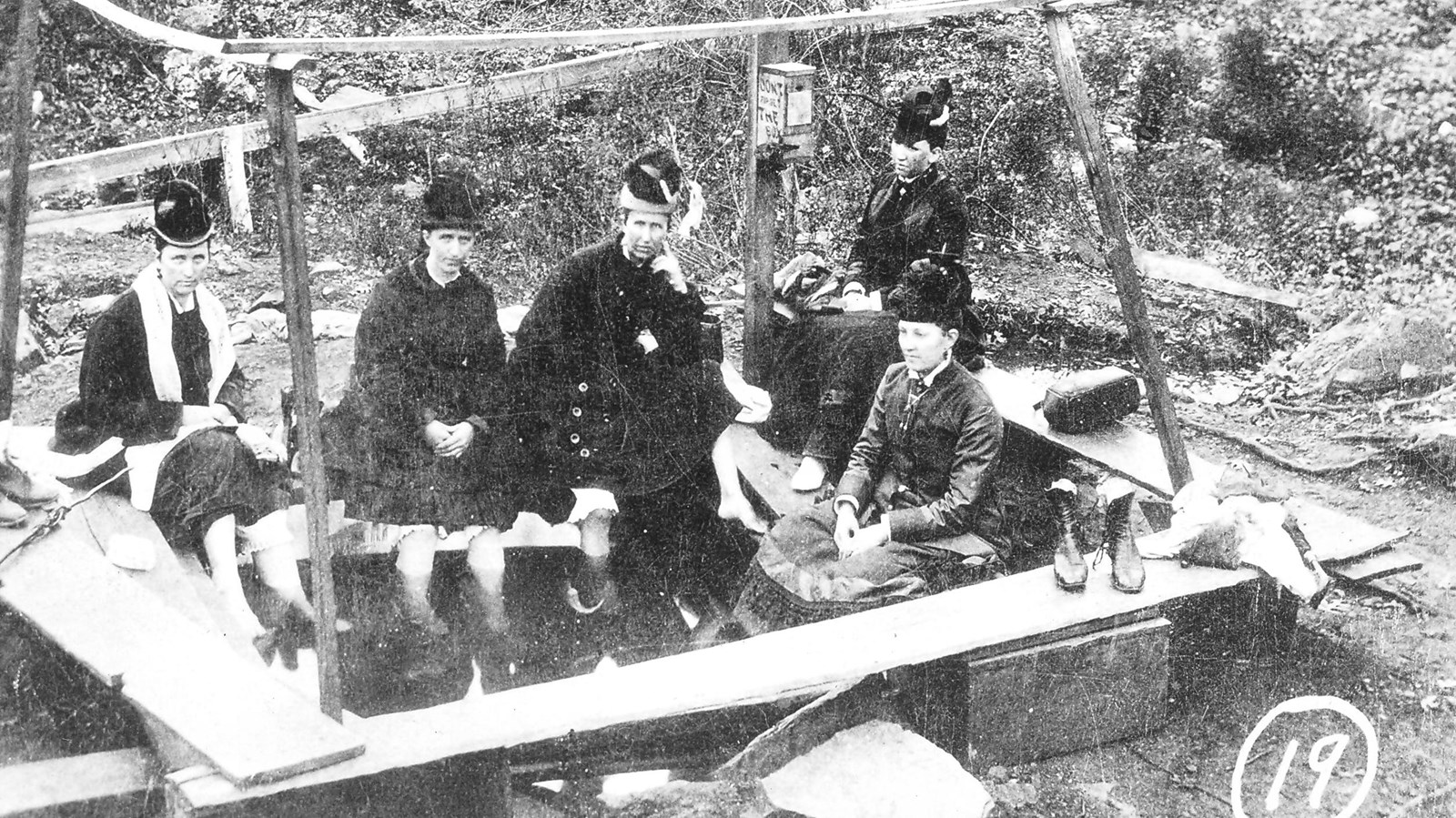Last updated: December 15, 2022
Place
Corn Hole

NPS/Archive
Quick Facts
Location:
Hot Springs, Arkansas
Significance:
Corn Hole Springs attracted a broad range of bathers in the nineteenth century seeking treatment for specific foot ailments.
OPEN TO PUBLIC:
No
Corn Hole Springs attracted a broad range of bathers in the nineteenth century because of its ability to treat specific foot ailments.
The location of Corn Hole is an approximation as it has been covered by more than a century of development. In the nineteenth century, visitors dug into the tufa rock at the mouth of Corn Hole Spring, creating a deeper hole. Bathers placed benches around the spring to make it easier to sit with their feet in the water.
The Corn Hole was named for its reported power to remove corns, calluses, and bunions on bathers’ feet. Bathers typically sat on the wooden benches and placed their feet in the muddy, 120-degree water for upwards of half an hour. After a week of daily foot-bathing, Bathers could then visit a “corn doctor” practicing near the spring who examined the corns and removed them for 25 cents per callus.
Corn Hole was popular among all classes of Hot Springs visitors. Observers frequently reported that Corn Hole was the most sociable location in Hot Springs, as strangers chatted about topics like the destruction of Ral Hole and their experiences during the Civil War, while healing their feet. In 1879, a Washington D.C.-based reporter described Corn Hole as “a truly democratic gathering. A judge, a tramp, a Senator, a backwoodsman, may here be sandwhiched.” The only social division was by gender, as women bathed in the morning and men in the afternoon.
Though Corn Hole was a popular destination for visitors, visitors’ attempts to expand the size of the spring through dynamite blasting caused the spring waters to flow elsewhere. The spring never appeared at its previous location. It was not listed among the active springs in a 1901 survey.
The location of Corn Hole is an approximation as it has been covered by more than a century of development. In the nineteenth century, visitors dug into the tufa rock at the mouth of Corn Hole Spring, creating a deeper hole. Bathers placed benches around the spring to make it easier to sit with their feet in the water.
The Corn Hole was named for its reported power to remove corns, calluses, and bunions on bathers’ feet. Bathers typically sat on the wooden benches and placed their feet in the muddy, 120-degree water for upwards of half an hour. After a week of daily foot-bathing, Bathers could then visit a “corn doctor” practicing near the spring who examined the corns and removed them for 25 cents per callus.
Corn Hole was popular among all classes of Hot Springs visitors. Observers frequently reported that Corn Hole was the most sociable location in Hot Springs, as strangers chatted about topics like the destruction of Ral Hole and their experiences during the Civil War, while healing their feet. In 1879, a Washington D.C.-based reporter described Corn Hole as “a truly democratic gathering. A judge, a tramp, a Senator, a backwoodsman, may here be sandwhiched.” The only social division was by gender, as women bathed in the morning and men in the afternoon.
Though Corn Hole was a popular destination for visitors, visitors’ attempts to expand the size of the spring through dynamite blasting caused the spring waters to flow elsewhere. The spring never appeared at its previous location. It was not listed among the active springs in a 1901 survey.
